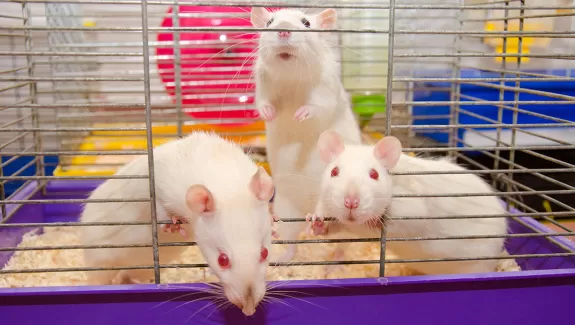
Rules Rule, or Do They?
Author: Andy Lattal, PHD
Rules are everywhere, from the Ten Commandments to those whose violations bring us into traffic court. It is no surprise that rule-governed behavior occupies such a prominent place in behavior-analytic theory. One perspective, on which there is no universal agreement, is that rules function as discriminative stimuli, setting the occasion for particular responses to be reinforced. I’d like to use this conceptualization to explore one aspect of rule governance. Rules often are derived to guide behavior under certain, often well-specified conditions. But sometimes those conditions have grey areas that create a disconnect between the rule and the circumstances under which it is being attempted to be applied.
A couple of examples illustrate the point. “Don’t stick your finger in a live light socket” is pretty straightforward and virtually universally valid. How about, “Don’t pick your nose?” Certainly, anyone doing so in a meeting, including others, likely would be at least socially chastised, making the probability of that response low. Circumstances often determine the extent to which rules govern behavior. This is as it has to be, or else behavior loses all of its flexibility and adaptability to changing circumstances.
 Because rules can’t possibly specify all circumstances and conditions for action, a good rule for rules is that they are guidelines for action rather than prescriptions for action. In a recent column in The Guardian entitled, “Parenting Guides Teach Us Everything – Except How to Be Parents,” Eva Wiseman laments the lack of such advice in such books. Her title resonates with the theme of this commentary. Parenting guides are just that; guides and not prescriptions. Why? Because circumstances require flexibility and adaptability – there can’t possibly be a rule to cover every possible situation in which parents and their children find themselves. Sometimes even guidelines don’t help because the situation is a true once-in-a-lifetime one. Guidelines that allow for generalization of parenting skills to grey-area circumstances can help, but they are not panaceas.
Because rules can’t possibly specify all circumstances and conditions for action, a good rule for rules is that they are guidelines for action rather than prescriptions for action. In a recent column in The Guardian entitled, “Parenting Guides Teach Us Everything – Except How to Be Parents,” Eva Wiseman laments the lack of such advice in such books. Her title resonates with the theme of this commentary. Parenting guides are just that; guides and not prescriptions. Why? Because circumstances require flexibility and adaptability – there can’t possibly be a rule to cover every possible situation in which parents and their children find themselves. Sometimes even guidelines don’t help because the situation is a true once-in-a-lifetime one. Guidelines that allow for generalization of parenting skills to grey-area circumstances can help, but they are not panaceas.  Parents and society at large have to rely on a combination of many previously learned skills and guidelines gleaned from parenting guides, wise grandparents, helpful nurses, or whatever to raise a child. Hillary Clinton got it right a long time ago when she observed that, “It takes a village.” It is a village that includes both rules and contingency-controlled experiences.
Parents and society at large have to rely on a combination of many previously learned skills and guidelines gleaned from parenting guides, wise grandparents, helpful nurses, or whatever to raise a child. Hillary Clinton got it right a long time ago when she observed that, “It takes a village.” It is a village that includes both rules and contingency-controlled experiences.
This idea of rules being guidelines isn’t new. But its lessons often are overlooked by rule enforcers even when the rules are being applied in grey areas for which they were never really developed in the first place. One place where some rule governance is inevitable is ethics, but all too often, even in this important area of practice, rigid rules really don’t work. What is needed is a conceptualization of rules as guidelines that allow flexibility and judgment (contingency-based experiences) to govern the practitioner’s final behavior. In the end, no matter what rules are put forth, there will be contingencies that shape and guide the “correctness” of practitioners’ or parents’ or teachers’ or anyone else’s actions, no matter what the rules state.

Mainstream Behavior Analysis
Skinner’s vision for behavior analysis was that it would become a mainstream science pertinent to both the minor and major problems of everyday human life. Clearly his vision has not been realized. This course presents mainstream areas where behavior analysis could make a contribution.










